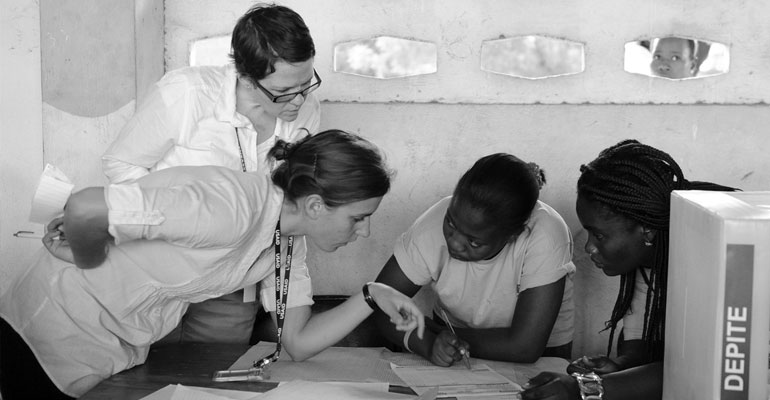
Meilleures pratiques pour éviter, Gérer ou médier la violence électorale et les conflits ont été compilés dans un nouveau guide publié par les États-Unis. Agence pour le développement international (USAID).
«La violence électorale est une question de développement d'une importance critique,»Dit Patrick Quirk, Co-auteur du guide au lancement de l'USAID. «Cela se produit dans une élection sur cinq, Dans toutes les régions et dans les pays d'importance stratégique pour les États-Unis. »
Bizarrerie, Élections et experts d'atténuation des conflits chez Creative Associates International, a applaudi le centre d'excellence de l'USAID sur la démocratie, Droits de l'homme et gouvernance (Centre DRG) pour son leadership dans ce domaine.
Une «meilleure pratique» est définie comme un processus, programme ou méthode qui produit des résultats supérieurs aux autres tels que mesurés par rapport à un ensemble d'objectifs, Le guide a dit. Le document de 50 pages décrit les meilleures pratiques dans la programmation de sécurité électorale pour chaque phase du cycle électoral, organisé par zone thématique, politique, Pratique ou activité du programme par les parties prenantes de l'État et non étatiques.
David Yang, Directeur du centre DRG de l'USAID, introduit le Meilleures pratiques en matière de sécurité électorale à peu près 50 experts et praticiens d'un mai 23 événement à Washington, DC.
Le guide «construit et soutient la base de preuves de notre travail,"Yang a dit au public.
Meilleures pratiques en matière de sécurité électorale s'appuie sur des preuves du monde entier et examine spécifiquement le Guatemala, Afghanistan, les Philippines et le Burundi, où les co-auteurs ont effectué des évaluations pour informer le guide. «Ces cas de pays présentent une diversité de profils de conflit électoral chez les auteurs, victimes, motivations, tactique, lieux, timing et intensité,"Le guide a dit.
Le Meilleures pratiques en matière de sécurité électorale Le guide a révélé que, Malgré les variations entre les pays, Certains thèmes communs ont émergé. Parmi eux:
- Formation aux multiples facettes pour les forces de sécurité, fourni dans la phase pré-électorale, peut améliorer leur capacité à contribuer positivement à la gestion des conflits électoraux.
- Les mécanismes de coordination entre les parties prenantes de l'État sont essentiels pour créer un environnement électoral sécurisé, en particulier le jour du scrutin.
- Les plans et procédures clairement définis pour la gestion des résultats des élections peuvent aider à atténuer les incitations à la violence dans la phase post-électorale.
- Les initiatives de renforcement électoral de la paix peuvent aider à prévenir, gérer, et médier les conflits tout au long du cycle électoral.
Le Meilleures pratiques en matière de sécurité électorale complète un juillet 2010 Manuel d'orientation technique appelée le Cadre de sécurité électorale. Produit pour l'USAID par Creative Associates International, Il est sorti en juillet 2010.
«Ce guide des meilleures pratiques est destiné à être une publication complémentaire à l'USAID Cadre de sécurité électorale Manuel,»Dit Jeffrey Fischer, Un expert des élections chez Creative Associates et co-auteur du guide. "Combiné, Ces publications fournissent aux décideurs politiques et aux praticiens des méthodologies pour prédire et profilé les conflits électoraux et adopter des mesures pour l'empêcher. »
Où le cadre fournit une méthodologie que les praticiens peuvent utiliser pour développer un profil de conflit électoral dans un prochain sondage, Le guide fournit les meilleures pratiques organisées par la phase du cycle électoral que les parties prenantes peuvent utiliser pour remédier à ce profil de conflit.
Les versions des deux rapports sont disponibles en ligne sans frais de Creative Associates International et USAID.